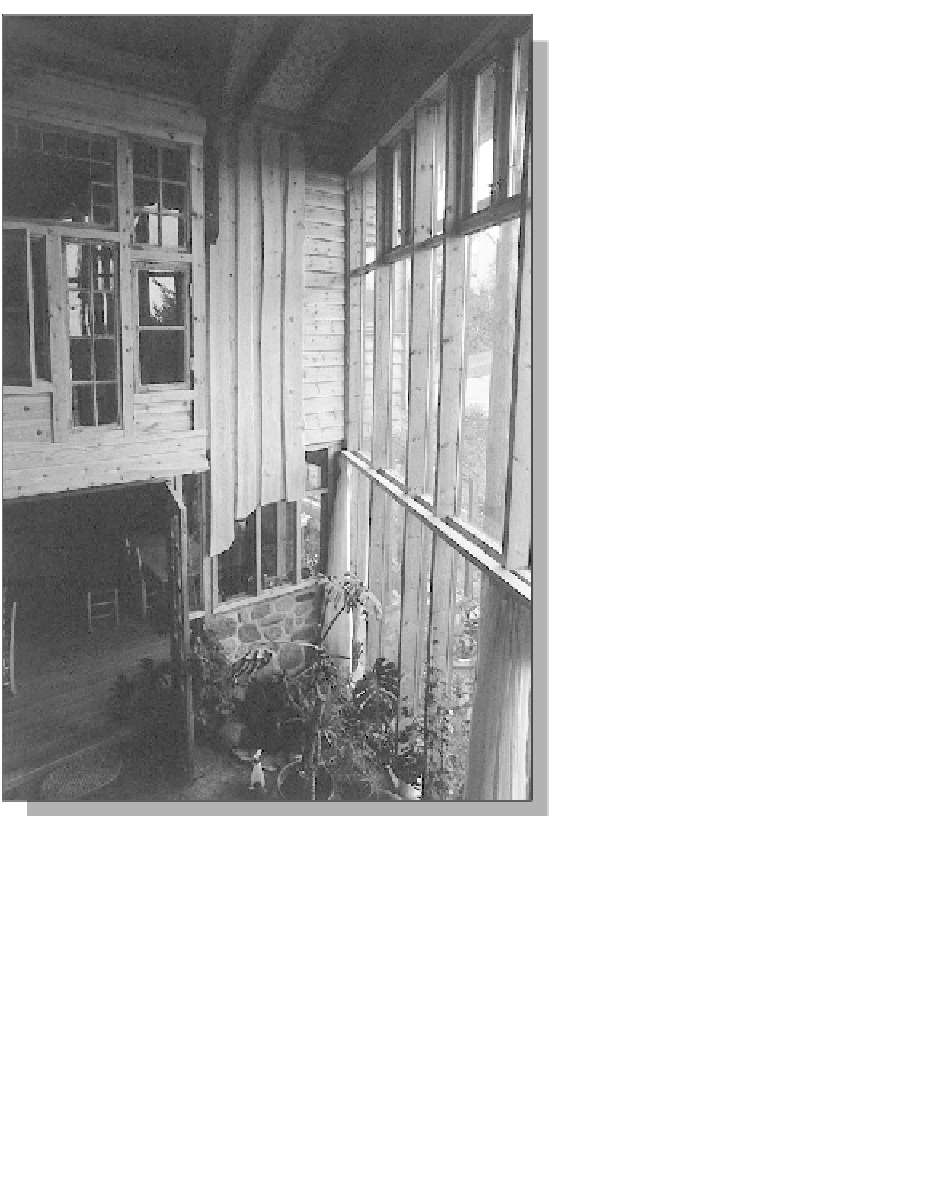Civil Engineering Reference
In-Depth Information
because they have not re-used win-
dows in their building programme
(Lauritzen, 1991). The calculation is
based on the fact that cleaning up,
repairing and repainting an old win-
dow represents only 80 per cent of
new production costs. Older win-
dows usually need a new sill; in
some cases turning the window
upside-down so that the previously
exposed parts rest further up is suffi-
cient. The recommended way to
remove old paint is to use a blow-
lamp. However, the vapour from a
blow-lamp can cause acute allergies.
Treating the paint and timber with
acid or soda is also possible, but this
is often quite aggressive to the wood-
en material method. Metal ironmon-
gery and furniture can often be re-
used or recycled. Pure timber waste
can be energy recycled in normal
incinerators. Impregnated timber
and plastic materials have to be
dumped at special tips.
The sustainable window
The modern sustainable window (Fig.
16.3) is manufactured as a three-lay-
ered, coupled window, where the middle
and best-protected pane of glass is a
low-energy glass with a coating of metal-
lic oxide, preferably gold. By having this
in the middle there is less chance of dust settling on the film, which would reduce the
effective saving of energy.
The outer glass is held in place with linseed oil putty and the two inner panes are fixed
with beading to make it easier for dismantling for re-use and recycling. The packing
around the window is untreated wool.
The outside layer of the window is the part most directly exposed to an aggressive climate,
e.g. burning sun or driving rain. The outside frame in a sustainable window is therefore
designed so that it can be removed, and has smaller panes of glass in case of breakage. The
sill is made from mature oak or pine heartwood. During the summer, the two inner window
frames can be removed to improve the light inside. The window is fixed to the building struc-
ture with screws.
Figure 16.2: Use of recycled windows in a house, between the
living room and the garden. Source: Gaia Lista 1986

